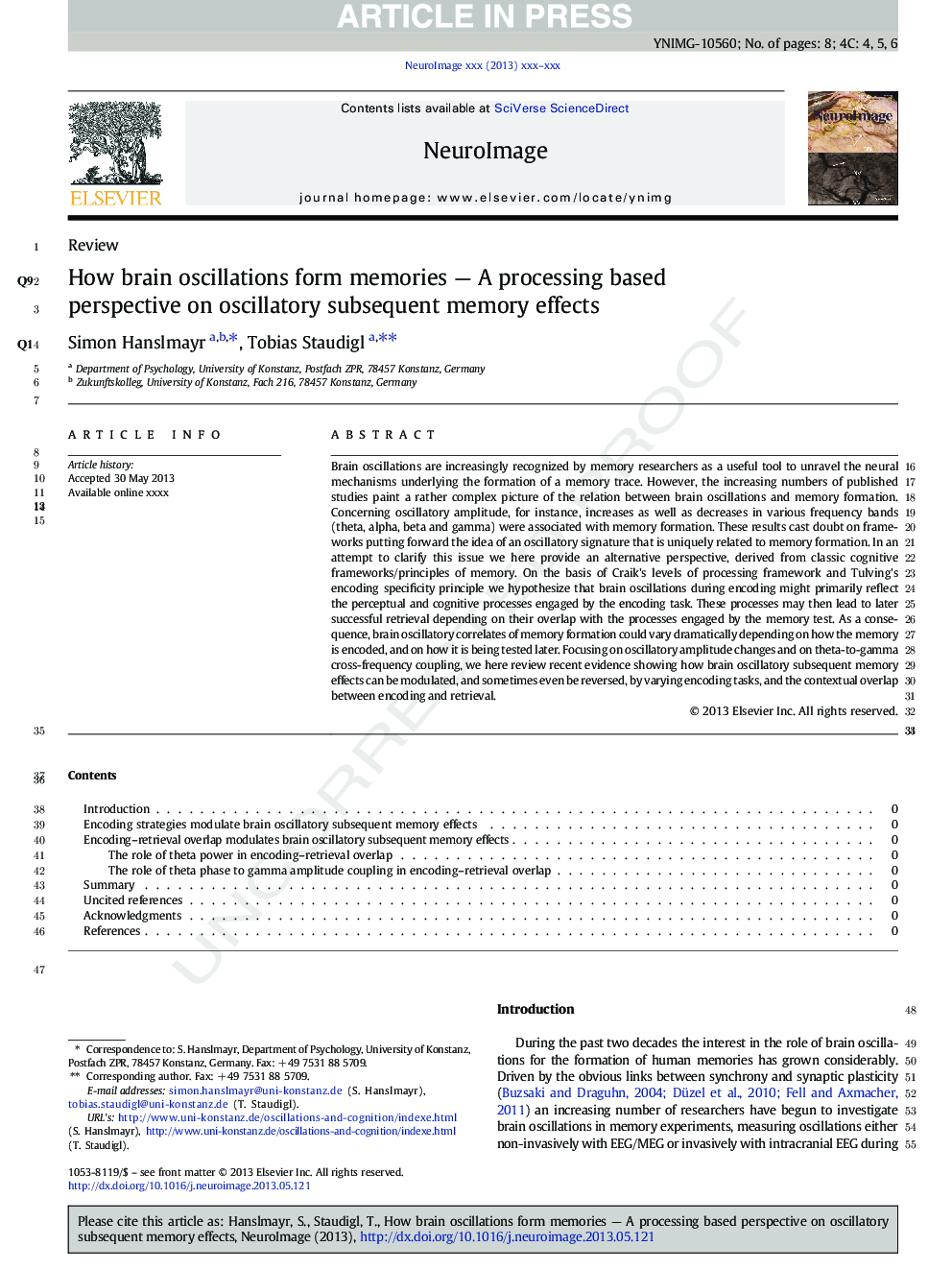| کد مقاله | کد نشریه | سال انتشار | مقاله انگلیسی | نسخه تمام متن |
|---|---|---|---|---|
| 6028325 | 1188702 | 2014 | 8 صفحه PDF | دانلود رایگان |
عنوان انگلیسی مقاله ISI
How brain oscillations form memories - A processing based perspective on oscillatory subsequent memory effects
ترجمه فارسی عنوان
چگونه مغزهای مغزی خاطرات را شکل می دهند - یک دیدگاه پردازشی مبتنی بر اثرات حافظه بعد از نوسان است
دانلود مقاله + سفارش ترجمه
دانلود مقاله ISI انگلیسی
رایگان برای ایرانیان
موضوعات مرتبط
علوم زیستی و بیوفناوری
علم عصب شناسی
علوم اعصاب شناختی
چکیده انگلیسی
Brain oscillations are increasingly recognized by memory researchers as a useful tool to unravel the neural mechanisms underlying the formation of a memory trace. However, the increasing numbers of published studies paint a rather complex picture of the relation between brain oscillations and memory formation. Concerning oscillatory amplitude, for instance, increases as well as decreases in various frequency bands (theta, alpha, beta and gamma) were associated with memory formation. These results cast doubt on frameworks putting forward the idea of an oscillatory signature that is uniquely related to memory formation. In an attempt to clarify this issue we here provide an alternative perspective, derived from classic cognitive frameworks/principles of memory. On the basis of Craik's levels of processing framework and Tulving's encoding specificity principle we hypothesize that brain oscillations during encoding might primarily reflect the perceptual and cognitive processes engaged by the encoding task. These processes may then lead to later successful retrieval depending on their overlap with the processes engaged by the memory test. As a consequence, brain oscillatory correlates of memory formation could vary dramatically depending on how the memory is encoded, and on how it is being tested later. Focusing on oscillatory amplitude changes and on theta-to-gamma cross-frequency coupling, we here review recent evidence showing how brain oscillatory subsequent memory effects can be modulated, and sometimes even be reversed, by varying encoding tasks, and the contextual overlap between encoding and retrieval.
ناشر
Database: Elsevier - ScienceDirect (ساینس دایرکت)
Journal: NeuroImage - Volume 85, Part 2, 15 January 2014, Pages 648-655
Journal: NeuroImage - Volume 85, Part 2, 15 January 2014, Pages 648-655
نویسندگان
Simon Hanslmayr, Tobias Staudigl,
